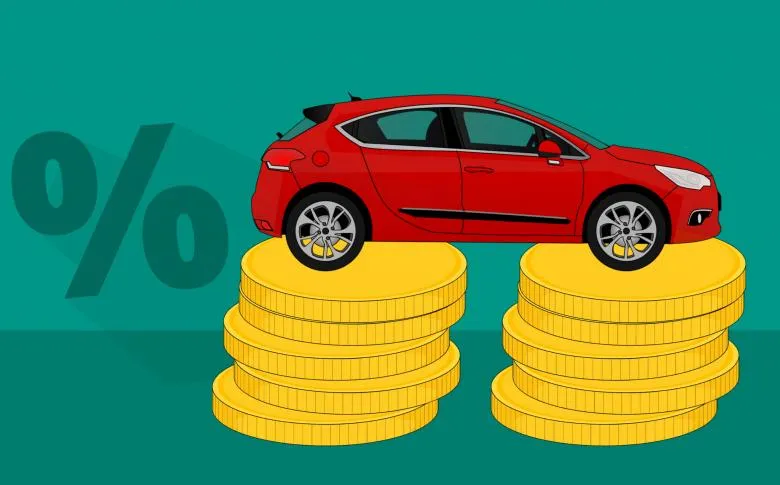Decoding Car Insurance Quotes: Beyond The Bottom Line
We’ve all been there. Staring at a screen full of numbers, overwhelmed by jargon, and wondering if we’re getting a good deal on car insurance. Getting car insurance quotes can feel like navigating a maze, but it doesn’t have to be a frustrating experience. This article aims to demystify the process, offering insights that go beyond just finding the cheapest price. decoding-car-insurance-quotes-beyond-the-bottom-line

The Quote Quest: Where to Start
Your car insurance quote quest typically begins online. Comparison websites are a popular starting point, allowing you to enter your details once and receive quotes from multiple insurers. You can also go directly to individual insurance company websites.
- Comparison Sites: These are excellent for a broad overview, but remember that they might not include every insurer in your area. Some smaller, regional companies may offer better rates.
- Direct Quotes: Getting quotes directly from insurers can be more time-consuming, but it ensures you’re seeing all your options.
- Independent Agents: Don’t underestimate the power of a local insurance agent. They can provide personalized advice, explain complex terms, and often find discounts you might miss on your own.
What Information Do You Need?
Be prepared to provide the following information when requesting a quote:
- Personal Details: Name, address, date of birth, driver’s license number, and Social Security number (for identification and credit score purposes).
- Vehicle Information: Make, model, year, and vehicle identification number (VIN).
- Driving History: Accidents, tickets, and any prior insurance claims.
- Coverage Preferences: Desired coverage levels (liability, collision, comprehensive, etc.) and deductible amounts.
Understanding the Quote Breakdown
A car insurance quote isn’t just a single number. It’s a breakdown of costs associated with different types of coverage:
- Liability Coverage: This protects you if you’re at fault in an accident and cause injury or damage to someone else. It’s usually expressed as two numbers (e.g., 50/100/50), representing bodily injury coverage per person, bodily injury coverage per accident, and property damage coverage.
- Collision Coverage: Pays for damage to your car if you collide with another vehicle or object, regardless of who is at fault.
- Comprehensive Coverage: Covers damage to your car from events other than collisions, such as theft, vandalism, fire, or natural disasters.
- Uninsured/Underinsured Motorist Coverage: Protects you if you’re hit by a driver who doesn’t have insurance or doesn’t have enough to cover your damages.
- Medical Payments (MedPay) or Personal Injury Protection (PIP): Covers medical expenses for you and your passengers, regardless of who is at fault.
The Deductible Dilemma
Your deductible is the amount you pay out of pocket before your insurance coverage kicks in. A higher deductible typically means a lower premium, but it also means you’ll have to pay more if you file a claim. Choose a deductible you can comfortably afford.
Beyond Price: Factors That Influence Your Quote
Several factors influence your car insurance quote, some of which are within your control:
- Driving Record: A clean driving record is the key to lower rates. Avoid accidents and tickets.
- Credit Score: In many states, insurers use credit scores to assess risk. Improving your credit score can lead to lower premiums.
- Vehicle Type: Expensive cars, sports cars, and cars with poor safety records tend to have higher insurance rates.
- Location: Urban areas with higher rates of accidents and theft typically have higher insurance premiums.
- Age and Gender: Younger drivers and male drivers generally pay more for insurance.
- Coverage Levels: Higher coverage limits and lower deductibles will increase your premium.
Unlocking Discounts: The Secret Sauce
Don’t leave money on the table! Ask about available discounts:
- Multi-Policy Discount: Bundling your car insurance with homeowners or renters insurance can save you money.
- Safe Driver Discount: If you’ve maintained a clean driving record for a certain period, you may qualify for a discount.
- Good Student Discount: Students with good grades may be eligible for a discount.
- Low Mileage Discount: If you drive fewer miles than average, you could save money.
- Vehicle Safety Features: Cars with anti-lock brakes, airbags, and anti-theft devices may qualify for a discount.
- Affiliation Discounts: Some insurers offer discounts to members of certain organizations or employees of certain companies.
The Art of Comparison: Apples to Apples
When comparing quotes, make sure you’re comparing apples to apples. Pay attention to the coverage levels, deductibles, and included features. A lower premium might seem appealing, but it could come with less coverage or a higher deductible.
Beyond the Quote: The Insurer’s Reputation
Price isn’t everything. Consider the insurer’s reputation for customer service and claims handling. Read online reviews and check with consumer organizations to see how the insurer is rated. A cheap policy is no bargain if the insurer is difficult to deal with when you need to file a claim.
The Importance of Reviewing Your Policy
Car insurance isn’t a “set it and forget it” type of thing. Review your policy annually or whenever your circumstances change (e.g., you move, buy a new car, or have a change in your driving record). Make sure your coverage levels are still adequate and that you’re taking advantage of all available discounts.
Negotiating Your Rate
Don’t be afraid to negotiate your rate. If you receive a quote that’s higher than you expected, ask the insurer if there are any discounts you might be missing. You can also shop around and see if other insurers offer better rates.
The Takeaway
Getting car insurance quotes can be a daunting task, but it’s an essential part of responsible car ownership. By understanding the factors that influence your quote, shopping around for the best rates, and taking advantage of available discounts, you can find a policy that provides the coverage you need at a price you can afford. Remember, the cheapest policy isn’t always the best. Consider the insurer’s reputation, coverage levels, and customer service when making your decision.

